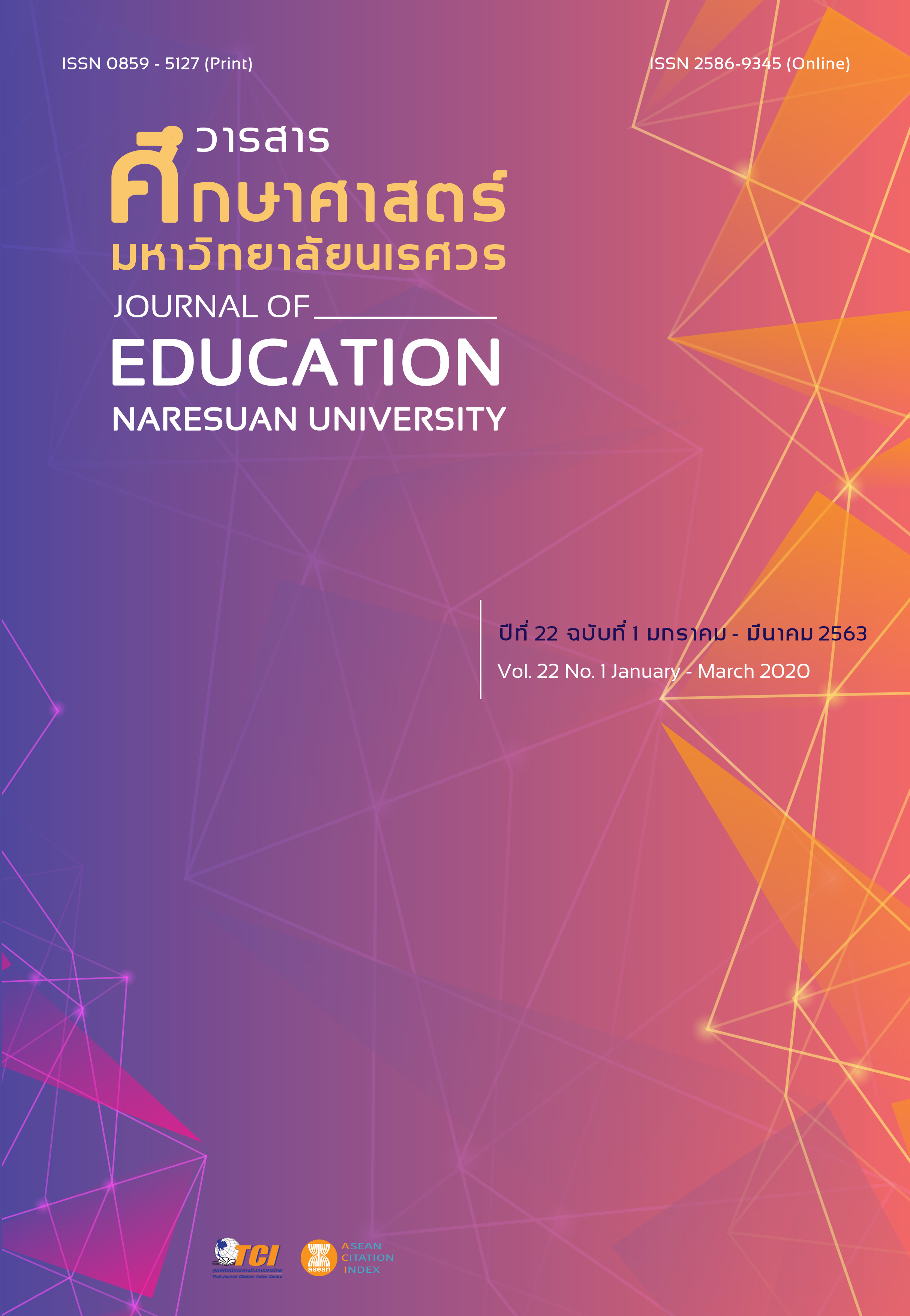THE DEVELOPMENT OF A CURRENT AND MAGNETIC FIELD EXPERIMENTAL APPARATUS FOR PHYSICS TEACHING TO ENHANCE UNDERGRADUATE STUDENT ACHIEVEMENT
Main Article Content
Abstract
The purpose of this research were 1) to development and find out the efficient experimental apparatus in electric current and magnetic field, 2) to compare the learning achievement between before and after using the experimental apparatus, and 3) to study students’ satisfaction toward their learning using the electric current and magnetic field experimental apparatus. The sample in this study was 90 second year students in general science program, in the second semester of the academic year 2016, Faculty of Education, Bansomdejchaopraya Rajabhat University. The sample was obtained by cluster random sampling, the One-Group Pretest-Posttest design and t–test for dependent sample statistics. The results found that 1) the experimental apparatus had an efficiency of 95/85, which was higher than the criterion 80/80. The overall quality of the experimental apparatus which was assessed by the experts was at a very good level ( = 3.77/4.00), the developed experimental can use for learning management in magnetic force exerting on a current-carrying wire and Ampere’s law efficiently, 2) the students’ learning achievement after using the experimental apparatus, post-test score was higher than the pre-test score at .01 level of significance, and 3) the students’ satisfaction toward their learning using the current and magnetic field experimental apparatus was at a high level (
= 4.21/5.00).
Article Details
The owner of the article does not copy or violate any of its copyright. If any copyright infringement occurs or prosecution, in any case, the Editorial Board is not involved in all the rights to the owner of the article to be performed.
References
Akkaratheeranun, T. (2012). Development of a high efficiency standing wave on a string apparatus for performing and experiment, teaching and learning activities in physics on wave. Bangkok: Srinakharinwirot University. [in Thai]
Boonsawai, S. (1991). Problem solving concept in physics teaching. IPST Magazine, 19(73), 19-21. [in Thai]
Boonyang, S., Srisanyong, S., and Singlop, S. (2016). A development of learning active package on ecosystem using cooperative leaning with STAD technique for grade 9 student. Journal of Education Naresuan University, 14(4), 223-237. [in Thai]
Collins, A. (2002). How students learn and how teachers teach. In R. W. Bybee (ed.) Science educators' essay collection: Learning science and the science of learning, 3-11. Arlington, VA: National Science Teacher Association.
Morkkrathok, P. (2002). Development of an experimental set on linear motion for the upper secondary level (Master’s thesis). Bangkok: Srinakharinwirot University. [in Thai]
Moszkowski, A. (1970). Conversations with Einstein. New York: Horizon Press.
Saksuparb, K. (2013). Development of an instruction model (PECA) with emphasis on physics problems solving ability of upper secondary student (Master’s thesis). Bangkok: Srinakharinwirot University. [in Thai]
Taweerat, P. (1995). Research methods in behavioral and social sciences. Bangkok: Srinakharinwirot University. [in Thai]


